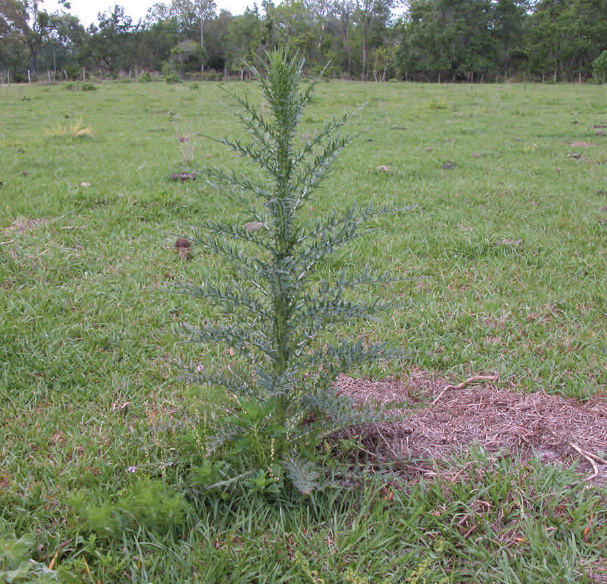Author: jferrell

Thistle that has began to bolt.
This is a time when most people are not thinking about pasture maintenance, but right now is when thistles are the most susceptible to control efforts. In January/February, most thistles are still in the rosette stage (a small ring of leaves on top of the ground) and easily overlooked. However, as warm weather approaches the thistle will send up a stalk and produce a flower. A single thistle plant can produce at least 4,000 seeds that will drift in the wind and produce higher thistle populations in the pasture the following year. Consequently, management practices need to be conducted prior to flower formation for effective thistle control. Even if thistles have not infested your pasture in the past, it is ideal that your pastures are scouted in late fall through mid-spring to ensure that thistles do not get out of control. New infestations are easier to manage than large-scale populations.

In January/February, most thistles are in the rosette stage – a small ring of leaves on top of the ground- as shown in this picture, and easily overlooked
Although there are at least nine different species of thistle in Florida, most are closely related and control recommendations will not differ. As a general rule, thistles in the rosette stage are much easier, and cheaper, to control than thistles that are flowering (Table1). If caught early, a few dollars per acre of 2,4-D ester is the best solution. This application is best made when daytime temperatures are consistently in the 60s. Applications made during a cold snap can decrease activity. Now is the time to quickly scout your pastures and determine if enough thistles are present to require a herbicide application. If so, spraying early will always be easier and provide much greater dividends.